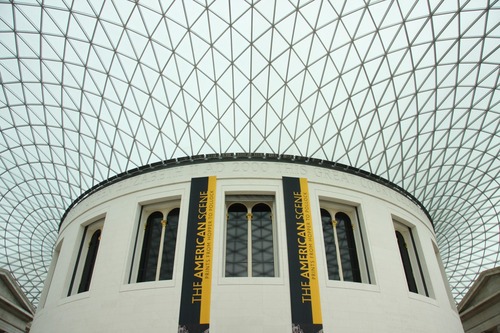
Last Saturday (11th June) Birmingham held its very own TED conference, TEDx Brum – Power of Us, at its Town Hall in Victoria Square. To say this was one of the most incredibly well organised events I have ever attended is a major, major understatement. Everything about TEDx Brum was just superbly well designed; from the beautifully laid out and printed program of events (below) to the military like precision of the event itself where a continuous stream of speakers and performers came out on stage and wow’ed the audience with their passion and the power of their messages.

Lauren Currie, one of the speakers at this years conference, has summarised why this event was so different and greater than its #PowerOfUs hashtag here. For me, her point ‘no painting-by-numbers’ really sums up why this was such a different conference from ones I, and I’m sure many others at the event, have attended before.
“It was a conference that wasn’t about ‘meeting new people’ or ‘learning new things’ – which are very middle-class objectives for actions. Nobody had an objective of getting new business cards. No speaker had slides full of ‘tweetable wisdom’. These weren’t presentations that had been done a thousand times before to a thousand different conference halls – this was new and real. There was no existing structures justifying themselves. Only the new, the vibrant and the experimental – at a stage where we can start to test and adjust and adapt and copy.”
Anyone who has watched a TED talk at ted.com will know that the presentation skills of the speakers are absolutely top-notch and something any of us that does public speaking, no matter how small or large the audience, aspires too. I can honestly say that every single one of the speakers and performers at TEDx Brum could easily have presented at a full blown TED and exceeded the very considerable speaking skills of those presenters. Whether it was @AdnanSharif1979 telling us about the horrors of forced organ donation (and why we should all sign up to be organ donors), @AnisaHaghdadi, founder of @beatfreeks telling us we needed to “build the thing that builds more things” or the heartfelt and incredibly brave talk by @JayneHardy, founder of Blurt who got a standing ovation for speaking about her own struggles with depression, everyone spoke with total and absolute passion and dedication to their own cause as well as the wider one of unleashing the #PowerOfUs.
As @ImmyKaur the curator of TEDx Brum says in her introduction to this years conference:
“Birmingham is an archetype of the future many cities face. This future will not come without hard work, disruption and genuine collaboration. We will need to come together across our traditional sectors and divides to create, imagine and build the future together. We must unleash the true #PowerOfUs to catalyse this transformation.”
There are lots of truly amazing things happening in Birmingham right now. I was part of an event a few weeks ago whose aim is to pull together the tech community in Birmingham and its wider surrounds. All of these strands need to come together to make the change that this great city deserves and which is long overdue. Here’s to the #PowerOfUs and all the great people in Birmingham that are making this happen.

